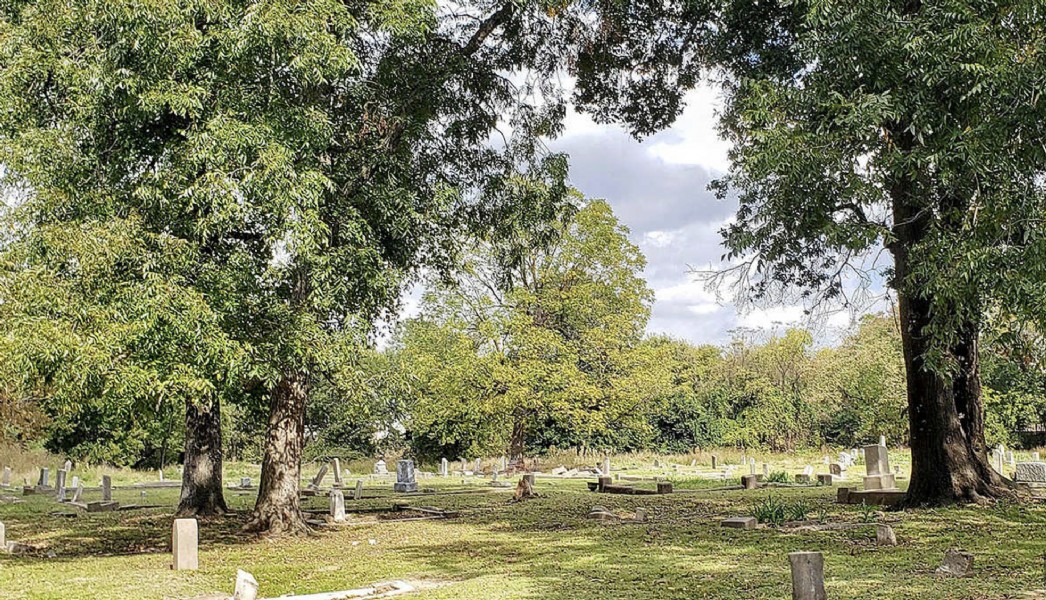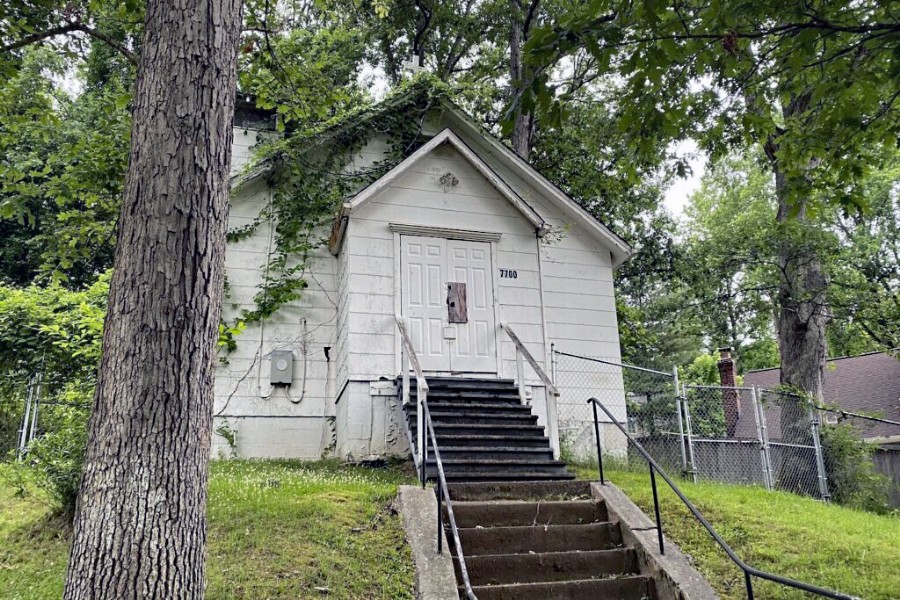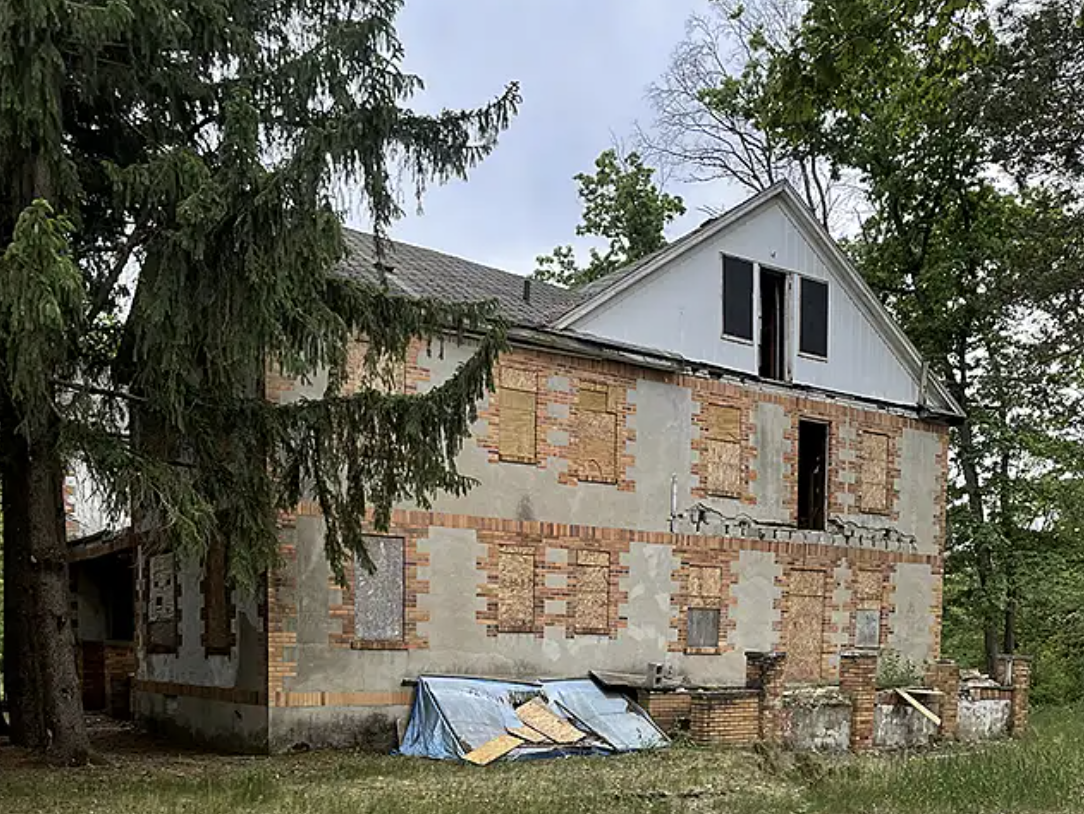
Olivewood Cemetery - Houston, Texas
Incorporated in 1875, Olivewood Cemetery in Houston, Texas, is one of the oldest-known platted African American cemeteries in Houston, with more than 4,000 burials on its 7.5-acre site. The final resting place of many notable figures in Houston's early African American community and of formerly enslaved Africans, this Texas Historic Cemetery and UNESCO Site of Memory for the Slave Route Project also illustrates unique African American burial practices developed in pre-Emancipation Black communities, including upright pipes as grave features, the use of ocean shells as grave ornaments, and upside-down or inverted text.
Over time, changing demographics and increased development led to the cemetery's decline and abandonment. Decades of neglect, vandalism, uncontrolled invasive vegetation, and the occasional use of the cemetery as an illegal dumping ground took their toll. But the most persistent threat is the impact of extreme weather events due to climate change. Historic gravesites are being damaged and even lost entirely due to extreme precipitation events that cause erosion as uncontrolled run-off and greater volumes of water move at higher speeds through the bayou adjacent to the cemetery.
The nonprofit Descendants of Olivewood, Inc. formed in 2003 to restore and maintain the cemetery and now has legal guardianship. With the support of an African American Cultural Heritage Action Fund grant in 2021, the organization has undertaken a comprehensive study to clarify the extent of the threat from flooding and erosion, and identify specific protection and mitigation measures, but advocates will need partnerships and funding in order to implement these plans.

Morningstar Tabernacle No. 88 Order of Moses Cemetery and Hall - John Cabin, Maryland
In 1880, the formerly enslaved couple Robert and Sarah Gibson bought property on what is now Seven Locks Road in Cabin John, Maryland. By 1895 nine other black families had joined them in buying land here. Together these families built a self-reliant settlement, called Gibson Grove, later just No. 10.
In 1882, the community organized the first black school in the district. In 1885, it established Morningstar Tabernacle No. 88 of the Order of Moses. This benevolent society helped members in times of need and in death. Its Moses Hall and Cemetery were adjacent to each other. By the 1880s the community was on the church circuit; in 1898 Sarah Gibson gave land to formally establish the Gibson Grove AME Zion Church. The school for the local black children never had a dedicated building; it was alternatively housed in the church and the Moses Hall lodge.
The Moses Hall foundation in Cabin John is the last known surviving remnant of an Order of Moses hall in Montgomery County.

Hotel Casa Blanca - Idlewild, Michigan
Hotel Casa Blanca played a significant cultural role in the historic Black resort community of Idlewild, Michigan. Designed and built by Black architect Woolsey Coombs in 1949, Hotel Casa Blanca served as a premier lodging site for African American travelers, entertainers, entrepreneurs and thought leaders during segregation, and was included in The Negro Motorist Green Book. Known as “Black Eden,” by the 1950s Idlewild drew thousands of annual visitors, and Hotel Casa Blanca hosted performances by legendary African American artists like Louis Armstrong, Count Basie, and Aretha Franklin.
After integration, like many formerly segregated Black resorts, Idlewild experienced lower visitation and economic disinvestment. Today, the historic resort community has a population of around 700 residents, and Hotel Casa Blanca has been vacant and deteriorating for over 30 years.
With hopes of saving the building, the previous owner of Hotel Casa Blanca sold it to 1st Neighbor LLC, a Black woman-led nonprofit. 1st Neighbor plans to rehabilitate the hotel into a bed-and-breakfast including overnight suites, meeting spaces, and a heritage and learning center, and has taken crucial steps towards restoration, including removal of hazardous material and developing architectural plans for reuse.
/Blog/Endangered-African-American-Historic-Sites/Endangered-African-American-Historic-Sites/The-disgraceful-history-of-erasing-Black-cemeteries-in-the-United-States/?link=1&fldKeywords=&fldAuthor=&fldTopic=0
Wednesday, October 22, 2025 • • General
The burying ground looks like an abandoned lot. Holding the remains of upward of 22,000 enslaved and free people of color, the Shockoe Hill African Burying Ground in Richmond, Virginia, established in 1816, sits amid highways and surface roads. Above the expanse of unmarked graves loom a deserted auto shop, a power substation, a massive billboard. The bare ground of the cemetery is strewn with weeds.
/Blog/Endangered-African-American-Historic-Sites/Endangered-African-American-Historic-Sites/The-Unity-Cemetery-Preservation-Fund-is-accepting-applications-for-funding-in-2026/?link=1&fldKeywords=&fldAuthor=&fldTopic=0
Friday, September 26, 2025 • • General
It is our pleasure to announce that the Unity Cemetery Fund is accepting applications for funding in 2026. The attached PDF includes detailed information about the grant process. Applications will be due February 28th, 2026. The award will be announced in May 2026.
In 2024 the Unity Cemetery Fund was pleased to be able to award funding to Geer Cemetery in North Carolina for needed repairs and infrastructure work, and in 2025 we provided funding to the Descendants of Olivewood in Texas for needed repairs within their cemetery.
/Blog/Endangered-African-American-Historic-Sites/Endangered-African-American-Historic-Sites/A-Search-for-Ancestors-Sheds-New-Light-on-Pierce-Chapel-African-Cemetery/?link=1&fldKeywords=&fldAuthor=&fldTopic=0
Sunday, August 17, 2025 • • General
As a society, we struggle with the concepts of death and loss. Once those realities touch our lives though, we tend to lean into remembrance: through familial altars, commemorative t-shirts, even memorial tattoos. We recognize our late loved ones through physical spaces, cemeteries, with touching gravestones, and bouquets lining the casket buried below.
But for an immeasurable number of Black families, even this basic respect wasn't extended to their ancestors. Many curious descendants, like Yamona Pierce, have to carry out search expeditions for their family members, constructing retroactive family trees to trace lineages that weren't carefully written down.
/Blog/Endangered-African-American-Historic-Sites/Endangered-African-American-Historic-Sites/Mellon-Foundation-awards-125-million-for-Mosquito-Beach-Restoration/?link=1&fldKeywords=&fldAuthor=&fldTopic=0
Thursday, May 1, 2025 • • General
Historic Charleston Foundation (HCF) is proud to announce a generous $1.25 million grant from the Mellon Foundation to complete the rehabilitation of the historic Pine Tree Hotel and adjacent Skeeta Beach Lounge for the newly formed Historical Mosquito Beach Foundation.
/Blog/Endangered-African-American-Historic-Sites/Endangered-African-American-Historic-Sites/Charleston-cemetery-gets-digital-preservation-to-honor-preserve-black-history/?link=1&fldKeywords=&fldAuthor=&fldTopic=0
Saturday, April 19, 2025 • • General
CHARLESTON, S.C. (WCSC) - A sacred piece of Charleston's past is getting a 21st-century safeguard.
The Charleston Humane and Friendly Cemetery in the heart of the Holy City is now part of a cutting-edge digital project aimed not just at preserving graves, but also at honoring legacies and connecting descendants to their roots.
With headstones dating back to the 1800s, the Humane and Friendly Society Cemetery in Charleston is more than just a final resting place, it's a living archive of African American history. The cemetery was founded in 1802 and established its cemetery in 1856, according to the Preservation Society of Charleston.
/Blog/Endangered-African-American-Historic-Sites/Endangered-African-American-Historic-Sites/Black-graves-are-being-moved-to-make-way-for-an-industrial-park-drawing-a-mix-of-emotions/?link=1&fldKeywords=&fldAuthor=&fldTopic=0
Saturday, March 1, 2025 • • General
DANVILLE, Va. (AP) — A decision to move the remains of hundreds African American tenant farmers from a former Virginia tobacco plantation to a dedicated burial ground has elicited a range of emotions among the sharecroppers' descendants.
Some worry about the implications of disturbing the graves of people who were exploited and enslaved. Others hope the remains can be identified and reburied with more respect than they were afforded in life.
/Blog/Endangered-African-American-Historic-Sites/Endangered-African-American-Historic-Sites/National-Park-Service-withdraws-Black-community-in-Louisiana-from-historic-landmark-consideration/?link=1&fldKeywords=&fldAuthor=&fldTopic=0
Monday, February 24, 2025 • • General
WALLACE, La. (AP) — A Louisiana landscape of centuries-old sugar cane plantations and enduring Afro-Creole culture along the Mississippi River had been eligible for receiving rare federal protection following a multi-year review by the National Park Service.
But this month, the agency withdrew the 11-mile (18-kilometer) stretch of land known as Great River Road from consideration for National Historic Landmark designation at the request of state officials, who celebrated the move as a win for economic development.
/Blog/Endangered-African-American-Historic-Sites/Endangered-African-American-Historic-Sites/Endangered-African-American-Historic-Sites-Fund-Launched/?link=1&fldKeywords=&fldAuthor=&fldTopic=0
Saturday, February 1, 2025 • • General
Through the power of action and education, the African American Heritage Preservation Foundation (AAHPF) gives voice to endangered and lesser-known historic African American sites of significance. AAHPF has launched its capital campaign for its "Endangered African American Historic Sites Fund" today!
/Blog/Endangered-African-American-Historic-Sites/Endangered-African-American-Historic-Sites/Southern-Maryland-Secures-116K-for-Historic-African-American-Sites/?link=1&fldKeywords=&fldAuthor=&fldTopic=0
Monday, December 16, 2024 • • General
Hughesville, Md. — A comprehensive initiative to document African American historic resources in Southern Maryland is set to move forward, thanks to a $58,000 grant awarded by the Maryland Historical Trust's FY 2025 Historic Preservation Non-Capital Grant Program. This grant, matched dollar for dollar by the Southern Maryland National Heritage Area, provides $116,000 in total funding to preserve and highlight the significant contributions of African Americans in the region.
/Blog/Endangered-African-American-Historic-Sites/Endangered-African-American-Historic-Sites/Preserving-West-Lewisvilles-Oneida-Court/?link=1&fldKeywords=&fldAuthor=&fldTopic=0
Wednesday, November 20, 2024 • • General
Dating back to 1925, the Oneida Bungalow Court is the largest single-site collection of historic residential units from West Lewisville's (North Riverside's) early days. Now a small local developer intends to preserve and rehabilitation the missing middle housing site as a form of addressing the city's affordable housing crisis. Here is a look at Oneida Court.


